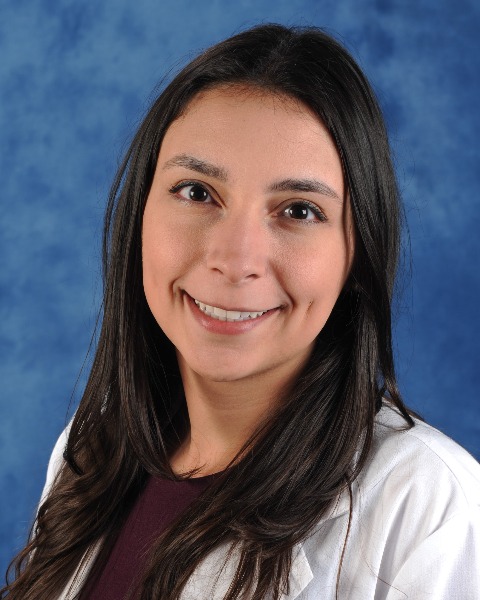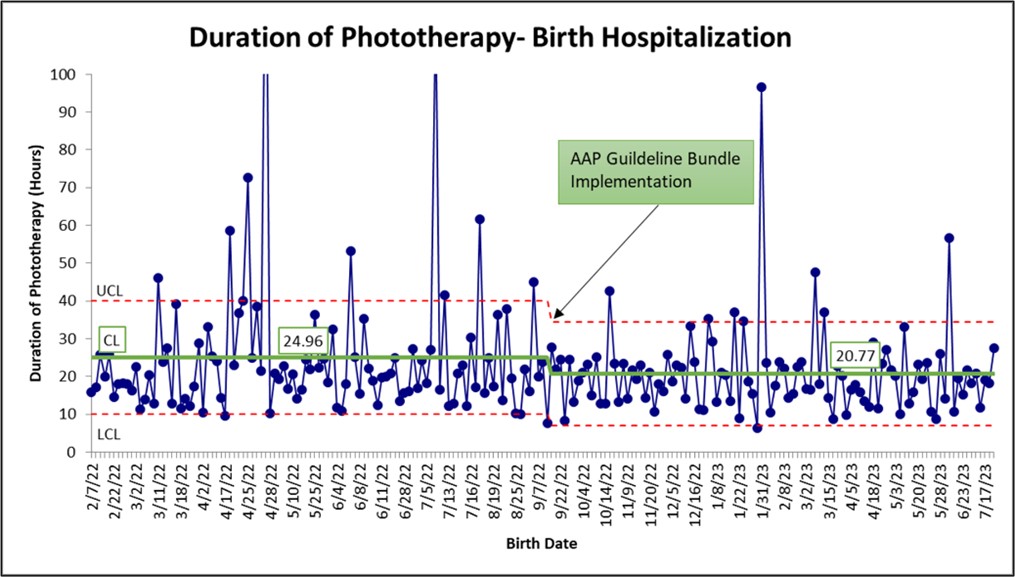Hospital Medicine
Session: Hospital Medicine 4
136 - Impact of 2022 AAP Hyperbilirubinemia Guideline Implementation on Birth Hospitalization Phototherapy
Saturday, May 4, 2024
3:30 PM - 6:00 PM ET
Poster Number: 136
Publication Number: 136.1331
Publication Number: 136.1331

Melissa Diaz, MD (she/her/hers)
Pediatric Hospital Medicine Fellow
University of North Carolina Chapel Hill
Chapel Hill, North Carolina, United States
Presenting Author(s)
Background: Hyperbilirubinemia is a common problem in newborns. Despite widely accepted guidelines for management, there is significant variation in care. In 2022, the American Academy of Pediatrics (AAP) published an updated guideline for hyperbilirubinemia management with new risk stratification and treatment thresholds.
Objective: The global aim was to improve the evidence-based management of infants who receive inpatient phototherapy for hyperbilirubinemia during birth hospitalization. Specific aims were to examine the impact of the updated guidelines on length of stay (LOS), phototherapy duration, proportion of infants treated with phototherapy, proportion of newborns receiving subthreshold phototherapy (defined as total serum bilirubin (TSB) level ≥ 0.3 mg/dl below age-specific threshold), and readmissions.
Design/Methods: The project utilized the Model for Improvement. We established a multidisciplinary team including pediatric providers, nurses, and lactation consultants. We initiated an implementation bundle including education, clinical pathways, standard note templates, discharge guidance for primary care physicians, and caregiver education. Subsequent PDSA cycles included updated treatment threshold graphs in the electronic health record (EHR), data sharing for awareness of performance, and a centralized document of clinics with weekend availability. Data was extracted from the EHR from February 2022 to July 2023.
Results: There were 6,012 total newborns admitted to the nursery, of which 239 infants (baseline n=113, intervention n=126) required phototherapy during birth hospitalization. LOS decreased from 75.5 hours to 74.2 hours. Duration of phototherapy decreased from 25 to 21 hours. The proportion of newborns treated with phototherapy decreased from 5.7% to 3.6%. The proportion of newborns receiving subthreshold phototherapy increased from 39% to 62%, with a subsequent decrease to 29%. Readmission rate decreased from 7.4% to 4.7%.
Conclusion(s): Bundled implementation of the 2022 AAP hyperbilirubinemia management guideline minimally decreased LOS, decreased phototherapy duration, and significantly decreased the proportion of infants treated with phototherapy. After guideline publication there was initially an increase in subthreshold phototherapy with subsequent decrease following targeted interventions. Despite higher treatment thresholds, readmissions decreased. Future interventions to further reduce the use of subthreshold phototherapy include an updated order set with decision support and individualized provider feedback.

.jpg)
.jpg)
